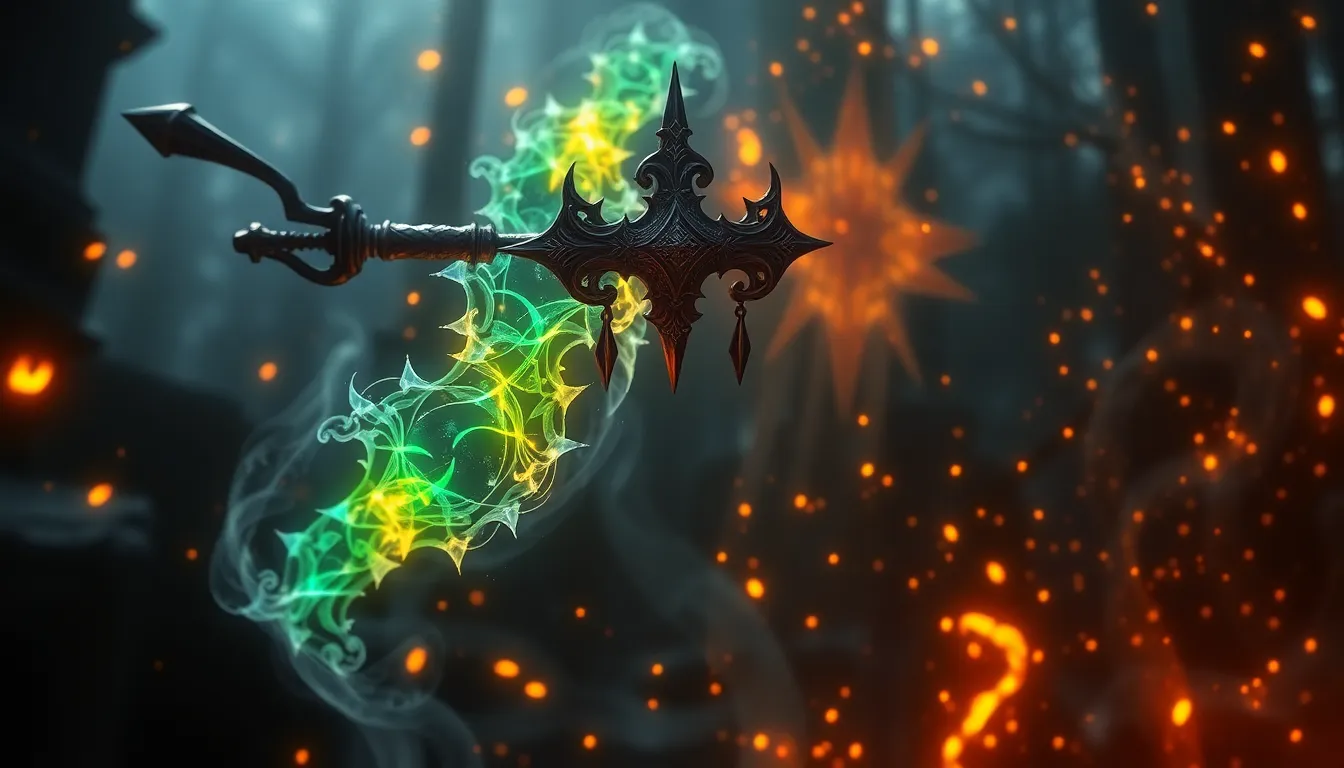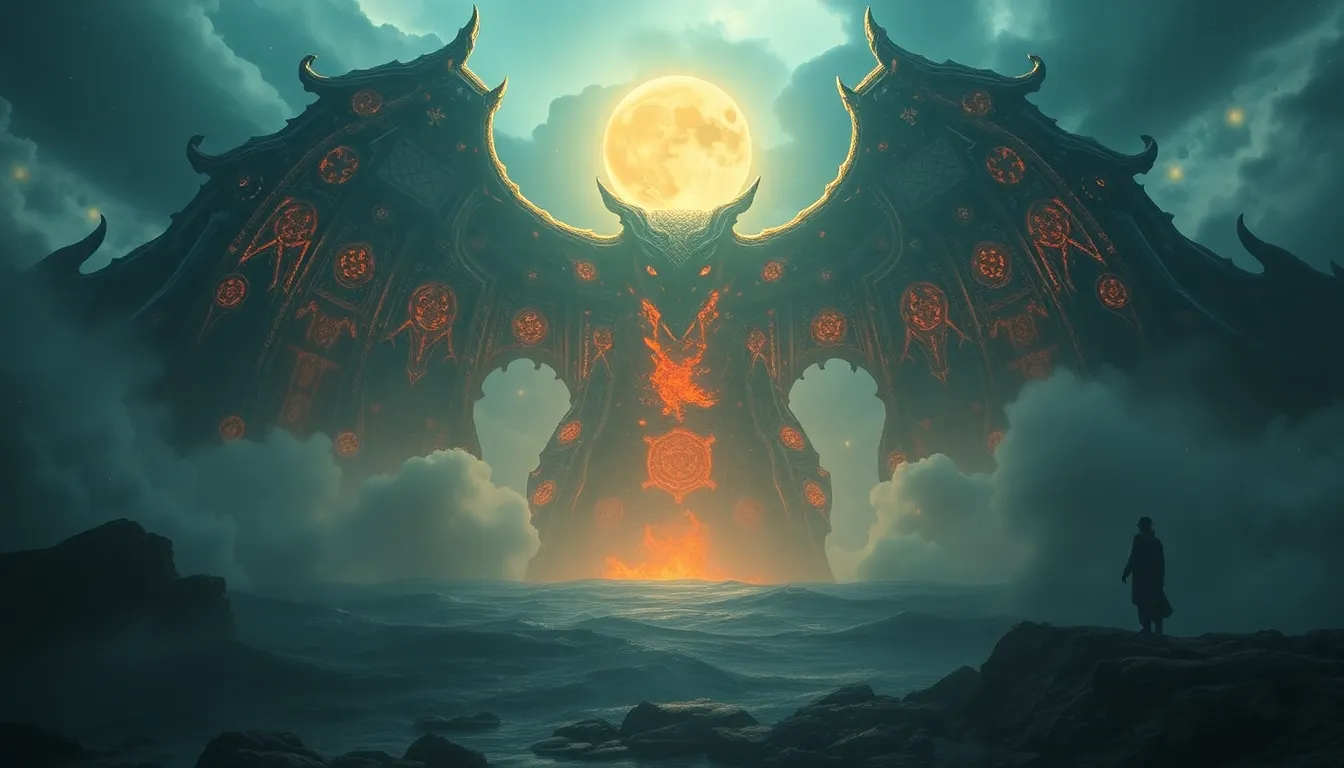The Magic of Myth: 5 Legendary Weapons and Their Mystical Origins
Introduction to Legendary Weapons in Mythology
Throughout history, legendary weapons have captured the imagination of people across cultures. These artifacts are not merely tools of war; they embody the essence of heroes, symbolize power, and often carry mystical properties that elevate their status beyond mere physicality. The significance of these weapons can be seen in various myths and legends, where they often play pivotal roles in the stories of gods, kings, and heroes.
The cultural importance of legendary weapons spans different civilizations, from the sword of a king in medieval Europe to the hammer of a Norse god. Each weapon carries with it a rich tapestry of stories, beliefs, and values that reflect the society from which it originates. As we explore some of the most renowned legendary weapons, we will uncover the mystical origins and enduring legacies that continue to fascinate us today.
Excalibur: The Sword of King Arthur
Excalibur is perhaps one of the most famous legendary weapons in Western mythology, associated with the legendary King Arthur. The origins of Excalibur are steeped in mystery, with various tales detailing its emergence. In some versions, the sword is thrust into a stone, only to be claimed by the one true king—Arthur himself. In other tales, it is bestowed upon him by the Lady of the Lake, emphasizing its divine significance.
The symbolism of Excalibur extends beyond its physical form; it represents rightful kingship, justice, and the divine right to rule. The sword’s magical properties are manifold, including the ability to cut through anything and the power to bestow invincibility upon its wielder. These attributes reinforce the ideals of nobility and heroism, making Excalibur an enduring icon of leadership.
Mjölnir: Thor’s Hammer in Norse Mythology
In the realm of Norse mythology, Mjölnir is the hammer wielded by the thunder god Thor, known for its immense power and destructive capabilities. According to myth, Mjölnir was forged by the dwarven brothers Sindri and Brokkr, representing not just a weapon but also the strength of craftsmanship and the power of the earth.
The hammer’s powers are multifaceted; it is not only a weapon of incredible force but also a symbol of protection for the gods and humanity against chaos and evil. Mjölnir’s enduring legacy is evident in modern culture, appearing in comic books, films, and merchandise, symbolizing strength, courage, and resilience.
Kusanagi: The Japanese Sword of the Grass-Cutting Hero
Kusanagi, also known as Kusanagi-no-Tsurugi, is a legendary sword deeply rooted in Japanese mythology. According to ancient tales, the sword was discovered by the storm god Susanoo after he defeated the eight-headed dragon Yamata no Orochi. This act not only symbolizes the triumph of good over evil but also connects Kusanagi to the divine lineage of the Japanese imperial family.
The sword possesses mythical powers, including the ability to control the wind and cut through grass, which metaphorically represents the ability to overcome obstacles. Kusanagi plays a crucial role in Japanese identity and folklore, symbolizing valor, heritage, and the divine right of rulers in Japan.
The Spear of Destiny: The Lance that Pierced Christ
The Spear of Destiny, also known as the Holy Lance, is surrounded by a complex web of historical and mythical narratives. According to legend, the spear was used by a Roman soldier to pierce the side of Jesus Christ during the crucifixion. This act imbued the spear with profound significance, as it became associated with divine power and authority.
The spear’s associations extend to the idea of power and divine right, often seen as a symbol of the Holy Grail and sought after by many throughout history. Legends about the Spear of Destiny suggest that whoever possesses it will be granted immense power and control. Its whereabouts have been a subject of fascination, with numerous claims of its existence and influence throughout the ages.
Durandal: The Sword of Roland
Durandal is the legendary sword wielded by Roland, a heroic figure in the French epic, the “Song of Roland.” This sword is said to have been forged by the god Vulcan and bestowed upon Charlemagne’s knight, Roland, symbolizing loyalty and courage. The epic tale recounts how Roland defended the rear guard of Charlemagne’s army against overwhelming odds, ultimately leading to his heroic demise.
Durandal is imbued with magical attributes, reputed to be unbreakable and capable of defeating any enemy. The sword also carries Christian symbolism, representing faith and divine protection. Durandal has left a lasting impact on French national identity and literature, embodying the ideals of chivalry and sacrifice.
The Bow of Odysseus: A Test of True Worth
In Homer’s “The Odyssey,” the bow of Odysseus serves as a powerful symbol of strength, skill, and rightful leadership. After a long journey filled with trials and tribulations, Odysseus returns to his home, Ithaca, where suitors vie for his wife Penelope’s hand. The bow becomes a test, as only the true master can string it and shoot an arrow through twelve axes.
This test highlights the themes of rightful kingship and the qualities of a true hero. The bow’s cultural importance in Greek mythology resonates through the ages, symbolizing the struggles of identity, belonging, and the quest for honor. Odysseus’s successful retrieval of his bow reaffirms his position as the rightful king of Ithaca and reinforces the values of wisdom and resilience.
Common Themes in Legendary Weapons Across Cultures
Examining these legendary weapons reveals recurring motifs that transcend individual cultures. Common themes include:
- Power: Legendary weapons often signify immense power, granting their wielders the ability to shape destiny.
- Righteousness: Many weapons are linked to the idea of divine favor, bestowed upon those deemed worthy.
- Heroism: The stories of these weapons frequently celebrate the hero’s journey, emphasizing bravery and sacrifice.
These themes illustrate the crucial role that legendary weapons play in storytelling and heroism, shaping cultural narratives and ideals over time.
The Influence of Legendary Weapons in Modern Media
The fascination with legendary weapons continues in modern media, where these mythical artifacts are adapted into films, books, and video games. For example:
- Excalibur: Frequently depicted in films and Arthurian adaptations, Excalibur remains a symbol of chivalry and honor.
- Mjölnir: Thor’s hammer has become iconic in the Marvel Cinematic Universe, symbolizing heroism and strength.
- Kusanagi: This sword has appeared in various anime and video games, often representing power and legacy.
These adaptations highlight the continued relevance of legendary weapons in contemporary storytelling, as they resonate with audiences seeking tales of heroism, power, and adventure.
Conclusion: The Enduring Allure of Mythical Weapons
The allure of mythical weapons transcends time and culture, embodying ideals of power, justice, and heroism. From Excalibur to Mjölnir, these legendary artifacts connect us to the stories of our ancestors and the values they cherished. As we continue to explore these tales in modern media, the fascination with legendary weapons remains a testament to their enduring significance in the human experience.



